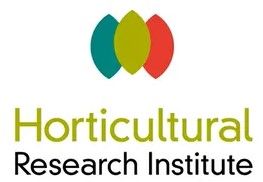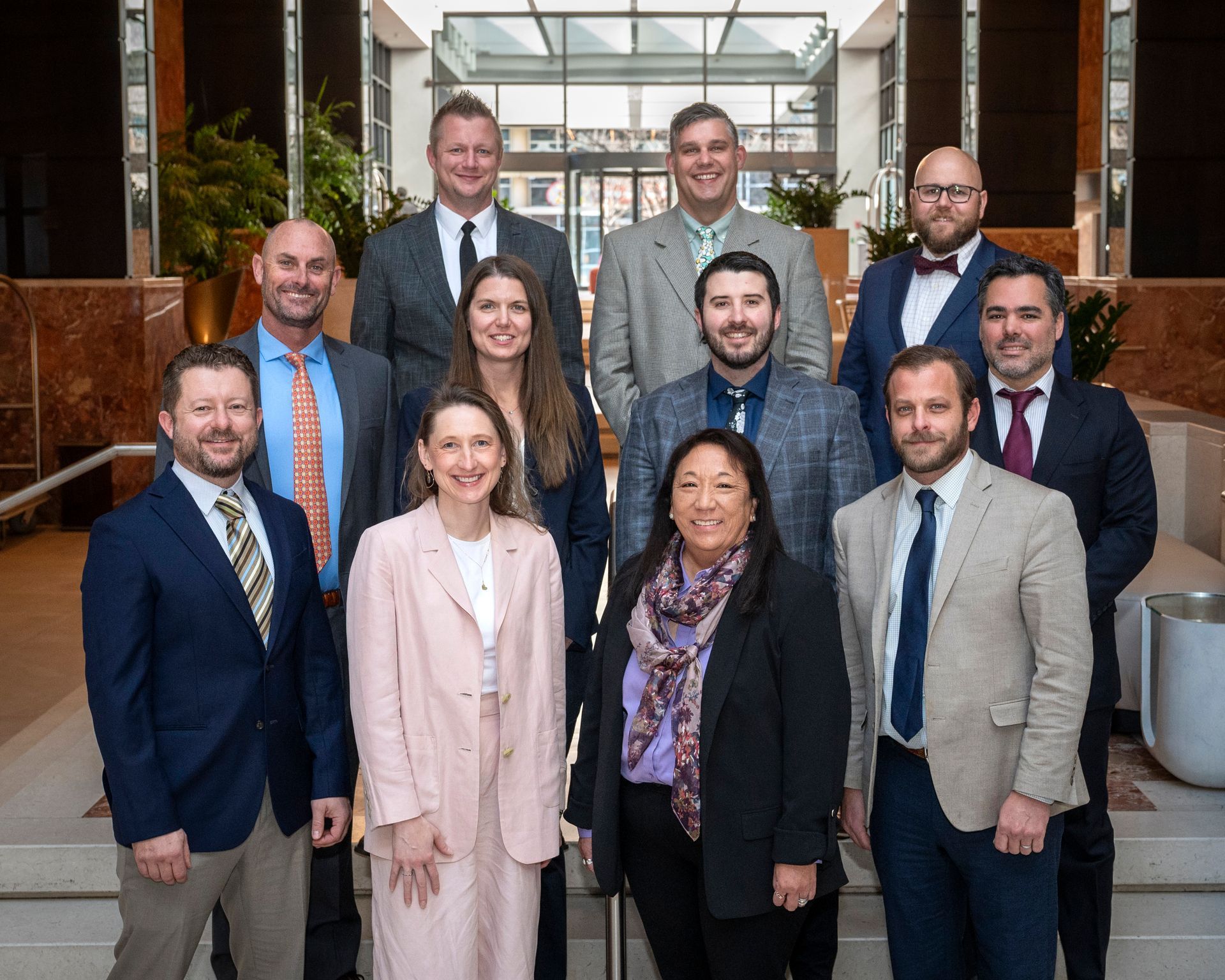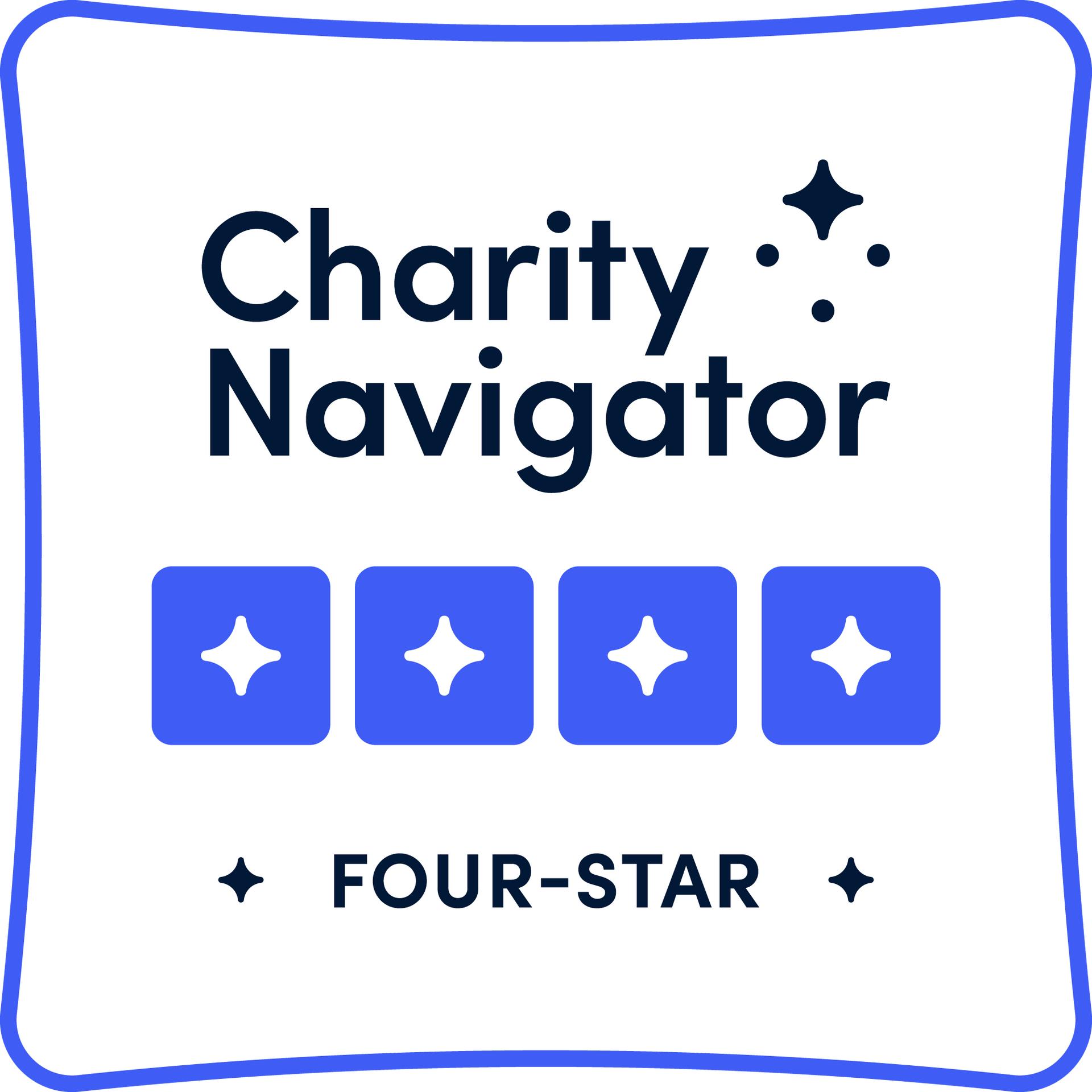Horticultural Research Institute

COLUMBUS, OH – July 22, 2025 – The Horticultural Research Institute (HRI) and AmericanHort are proud to announce the HRI Leadership Academy Class of 2026, a cohort of accomplished professionals from across the green industry who are poised to take their leadership to the next level. These individuals, representing various industry segments and career paths, were selected for their commitment to horticulture and their desire to help shape the industry's future. The HRI Leadership Academy is a one-year advanced leadership program designed for experienced horticulture professionals looking to elevate their influence and expand their strategic thinking and business skills. Built around in-person classes, peer collaboration, and mentorship, this program prepares leaders to confidently navigate business challenges, drive innovation, and spark positive change in their businesses, the industry, and their communities.

Columbus, OH - The Horticultural Research Institute (HRI), the research affiliate of AmericanHort, is excited to announce that it is now accepting research grant proposals for fiscal year 2026. HRI’s competitive grants program supports projects that directly impact and advance the green industry, providing funding for research on significant topics such as plant health, pest management, understanding consumer behavior, production efficiencies, and quantifying plant benefits.
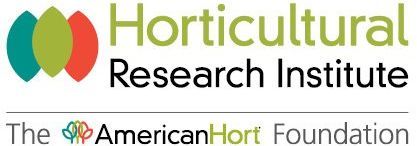
COLUMBUS, OH – The Horticultural Research Institute (HRI) is excited to announce that applications are now being accepted for its 2025 scholarship program. With more than $50,000 in funding available, these scholarships demonstrate HRI’s deep commitment to advancing the horticultural field through supporting student education.

COLUMBUS, OH – The Horticultural Research Institute (HRI) is proud to announce Dante Filadoro as the 2024 recipient of the Timothy S. and Palmer W. "Bill" Bigelow, Jr. Scholarship. Established in 1988 by the Bigelow family, this scholarship aims to support students from New England pursuing careers in horticulture, honoring the memory of Timothy Bigelow and celebrating the legacy of Palmer W. "Bill" Bigelow.

COLUMBUS, OH – (November 12, 2024) The Horticultural Research Institute (HRI) announces the opening of the HRI Leadership Academy Class of 2026 application window. This one-year leadership program is designed to develop the skills green industry leaders need to perform better, grow faster, and prepare for the future. “As we enter the fourth year of the HRI Leadership Academy, this program is driving the development of the next generation of leaders in the green industry. Our commitment is to empower passionate, dedicated individuals ready to lead the future of horticulture, and we can’t wait to welcome those who want to make a lasting impact,” said Leigh Geschwill, HRI Board President. The HRI Leadership Academy offers horticulture leaders a unique opportunity to enhance their leadership skills, broaden their horticultural knowledge, and connect with professionals across the industry. The academy is designed to give participants a comprehensive approach to leadership development through in-person training sessions and online classes and meetings. Applications will be evaluated on demonstrated leadership qualities, past evidence of or estimated future potential for contribution to the green industry, ability to consider the broader interests of the community, the applicant’s character and ability to grow because of this experience, and personal and employer commitment to the program. Preference will be given to candidates with at least five years of leadership experience and seven years of relevant industry work experience. “The HRI Leadership Academy is a critical investment in shaping our industry’s future. Graduates of the academy develop enhanced leadership skills to grow their companies, drive innovation, and strengthen the entire industry,” said Ken Fisher, AmericanHort President and CEO. “By cultivating leaders who are equipped to face the challenges of tomorrow, we are ensuring the long-term success of individual businesses, our communities, and the industry as a whole.” Application Timeline: Application Window: Open now until February 7, 2025 Interviews: March and April 2025 Class Selection and Notification: May 2025 Class Announcement: Cultivate'25, July 12-15, 2025, in Columbus, OH There is no fee to apply and AmericanHort covers program tuition. Applications should be submitted through the HRI Leadership Academy website during the application window. All applicants will be considered, and successful candidates will be chosen based on their commitment to the industry, leadership potential, and potential to contribute to the horticultural community. For more information about the HRI Leadership Academy and to download a program brochure, please visit HRILeadershipAcademy.org . ### About the Horticultural Research Institute (HRI) The Horticultural Research Institute (HRI), founded in 1962, has provided more than $9.5 million in funds to research projects covering a broad range of production, environmental, and business issues important to the green industry. Over $19 million is committed to the endowment by individuals, corporations, and associations. For more information about HRI, its grant-funded research, or programming, visit For more information about the HRI Leadership Academy and to download a program brochure, please visit HRILeadershipAcademy.org . About AmericanHort Green industry businesses perform better, grow faster, and prepare for the future as a member of AmericanHort, the green industry’s leading association. With a rich history of serving horticultural professionals, AmericanHort supports 20,000 members and affiliated businesses that include breeders, greenhouse and nursery growers, garden retailers, distributors, interior and exterior landscape professionals, florists, students, educators, researchers, manufacturers, and all of those who are part of the industry market chain. The horticulture industry's production, wholesale, retail, and landscape service components have annual sales of $346 billion, and sustain over 2.3 million full- and part-time jobs. AmericanHort works to impact the growth, performance, and successful future for the industry through advocacy, research, education, and advancing industry standards.

Columbus, Ohio – November 7, 2024 — The Horticultural Research Institute (HRI), the leading industry foundation dedicated to advancing horticultural education and research, proudly announces Elliott Kenney as the 2024 recipient of the prestigious Carville M. Akehurst Memorial Scholarship. This scholarship was established in 2002 by the Mid-Atlantic Nursery Trade Show, Inc. (MANTS) to honor Carville M. Akehurst’s significant contributions to the horticulture industry and his commitment to education.
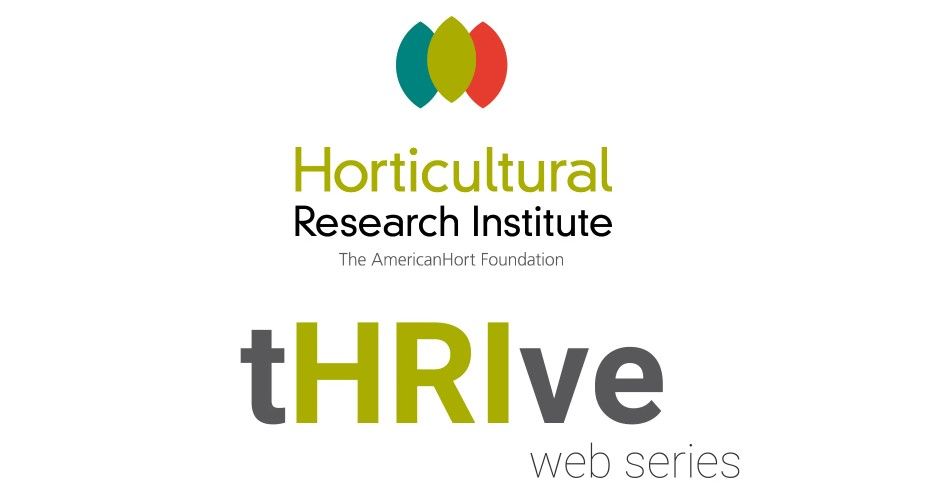
Explore the hidden world of boxwood microbiomes and how they impact plant health in this webinar summary. Learn about beneficial microbes, the effects of fungicides and antidesiccants, and how research on soil microbiomes is paving the way for sustainable boxwood cultivation. Discover how mycorrhizal fungi can enhance blight tolerance and why soil may be a reservoir for pathogens.

Gain a comprehensive understanding of the Box Tree Moth Compliance Agreement, including its goals, implementation strategies, and the roles of various stakeholders. Attendees will also learn practical tips for complying with the agreement and mitigating the moth’s impact. Understanding the BTM Compliance Agreement - Join us for an in-depth webinar on the Box Tree Moth Compliance Agreement, designed to protect our boxwood plants from this invasive pest. Attendees will gain a comprehensive understanding of the agreement’s objectives, key provisions, and the roles of various stakeholders in its implementation. BTM Regulations and Regulated Areas - Explore the BTM regulations with a detailed analysis of how these regulations were designed to control this invasive pest, including an understanding of the BTM quarantines. Learn why these regulations are essential for protecting the nursery trade and the economy and how you can contribute to these efforts. What is the National Plant Board? A brief introduction to the National Plant Board and their role in BTM Compliance Agreements and other phytosanitary topics. Maintaining Training Records and What to Expect During Inspections - Learn why record-keeping is essential and gain an understanding of what to expect during BTM compliance inspections.

his educational session aims to equip nursery producers, gardeners, and plant health professionals with vital knowledge and strategies to combat the pervasive threat of Calonectria pseudonaviculata, the fungus responsible for the devastating boxwood blight. Boxwood blight, a serious concern for the horticulture industry, jeopardizes the health and viability of boxwood plants, significantly impacting the ornamental plant market. Addressing this issue, the webinar will delve into the critical control points in nursery production, emphasizing effective sanitation practices to prevent and manage the spread of this disease. Attendees of the webinar can expect to gain: An understanding of the lifecycle and spread of Calonectria pseudonaviculata. Insight into the latest research and developments in boxwood blight control. Practical guidance on implementing effective sanitation and preventive measures in nursery production. Strategies for identifying critical control points to mitigate the risk of boxwood blight in their operations. This webinar is essential for anyone involved in the cultivation, care, or management of boxwood

This webinar dives into the emerging nursery problem of Vascular Streak Dieback (VSD). In this session, experts will provide a comprehensive overview, sharing insights gleaned from surveys, research updates, and practical management strategies. From understanding the timeline of recognition to discussing the fungus associated with VSD, its range of hosts, and symptoms, our speakers will cover it all. Delve into the latest research findings on identifying causal agents, fungicide efficacy trials, and cultivar screening. Whether you're a nursery owner, researcher, or simply interested in plant health, this webinar offers valuable knowledge and a platform for addressing your queries. Join us as we tackle VSD head-on and explore effective management approaches to safeguard woody ornamentals.

The Horticultural Research Institute (HRI) is proud to announce the successful completion of its competitive grants application and review process for 2024, resulting in the selection of 13 impactful projects for funding. The total investment of $420,000 will be directed towards initiatives tackling a spectrum of green industry issues, including pest management, new technologies, marketing insights, and plant disease prevention. HRI's commitment to advancing horticultural research that challenges current methods and fosters collaboration between businesses and researchers remains at the forefront of its mission. The selected projects align with HRI's commitment to advancing horticultural research within its four strategic areas of focus: quantifying plant benefits, creating innovative solutions, gathering consumer insights, and producing practical and actionable solutions. This comprehensive approach ensures that the funded projects will contribute significantly to the advancement of the green industry on multiple fronts. Board President Leigh Geschwill expressed her enthusiasm for the selected projects, stating, "The diversity of the projects submitted during this year's application and review process continues to build the scientific building blocks the industry needs to succeed. The Horticultural Research Institute is confident that these projects will deliver actionable advice for green industry businesses throughout North America, ultimately contributing to the growth and resilience of our industry." Jennifer Gray, HRI Administrator, emphasized the significance of the projects in meeting the unique needs of the horticultural industry. "Innovation and research are the cornerstones of a thriving green industry,” stated Gray. “The projects selected for funding each play a key role in driving progress, addressing challenges, and shaping the future of the industry.” The funded projects are: Identifying the causal agent and predisposing conditions that facilitate vascular streak dieback in redbud F. Baysal-Gurel, Tennessee State University Vascular Streak Dieback (VSD) in redbud is an emerging problem that has caused significant economic loss to nursery producers in the Southeastern United States in recent years. Even though the causal agent(s) of VSD has not been confirmed yet, Ceratobasidium theobromae (CT) has been identified both molecularly and morphologically and has always been associated with VSD symptomatic redbuds. CT is exhibiting a fastidious growth, hence isolating, and maintaining pure cultures of the fungus, and, more importantly, conducting Koch’s postulate is considered challenging. As every delay in a proper understanding of this issue, means more crop loss and a greater risk of the spread of the potential pathogen to new locales, nursery growers are seeking for a definitive and prompt diagnosis. Understanding the causal agent(s) and the conditions that favor the disease development is the key to the effective management of this novel threat. This proposed project aims to address several grower concerns regarding VSD by understanding the causal agent(s), predisposing environmental factors, and cultural practices that can accelerate VSD-related symptom development. Consequently, the findings of this study will enhance the horticulture industry’s profitability and consumer satisfaction with a better understanding of this threat. Introgression of VSD resistance to Eastern Redbuds Hsuan Chen, North Carolina State University Redbud (Cercis spp.) is a valuable landscaping flowering tree, and easter redbud, C. canadensis, an east coast native species, is the most important one that has been in high demand because of its diverse ornamental traits. Vascular Streak Dieback (VSD), a wide-range infectious disease, has caused more and more damage in redbud production since 2020. This project aims to introgress the VSD resistance traits from a related species to eastern redbuds and to develop molecular markers for enhancing the breeding process. The long-term target of the project is to release VSD-resistant eastern redbud cultivars for the nursery industry. Sequencing lilacs to discover genes for remontancy Ryan Contreras, Oregon State University Remontancy, or reblooming, is a preferred trait for ornamental plants because the extra or continuous flower season increases economic value of plants for growers and ornamental value for consumers. In taxa with this trait such as azaleas, roses, hydrangea, and lilac, reblooming cultivars dominate the market. Therefore, breeders would like to increase development of this trait in new cultivars. To streamline breeding, we have been developing molecular tools to predict which seedlings will be reblooming. Using new sequencing technology, our team will assemble a high-quality genome of Bloomerang® lilac that will allow us to identify the gene(s) responsible for reblooming in lilac and other taxa. In the near term we will use these tools to improve traditional breeding. Future aspirations include using new information to facilitate biotechnological methods to introduce reblooming in taxa where it previously has been absent. Improving Reception: Better Detection of RFID Plant Labels with Drone Mounted and Handheld Readers R. Thomas Fernandez, Michigan State University This project will build on previously funded HRI research that investigated reading 9 different types of RFID labels at a commercial container nursery using an aerial drone mounted reader and a handheld reader that was walked through the plant beds. A total of 4,000 labels were used on 4 different plant types read every other month for 1 year. Labels were read at 95% or better for up to 7 of the label types depending on plant and dates with the handheld reader. 4 of these label types were read at 98% or better for all plants and all dates. Stake and loop-lock label types were the most effective, while adhesive labels were reading at 90% or less in most cases. Additionally, the power output needed for the payload and RFID reader for the drone reading system resulted in short flight times per battery charge that limited its effectiveness. Improvements made to the drone reading system for longer flight time and reader powering and improved label configurations based on the prior results will be evaluated for this round of funding to increase the effectiveness of the drone reading system and expand the range of label types. Improving detection and resistance screening of current bacterial pathogen threats to the geranium industry Jonathan Jacobs, Ohio State University Diseases caused by microbial pathogens limit geranium production through the development of symptoms undesirable to consumers or even complete losses from whole plant death. The geranium industry regularly suffers losses from the bacterial blight pathogen Xanthomonas hortorum pv. pelargonii. A new, destructive lineage of this pathogen emerged in 2022, and this project aims to create diagnostic tools for emerging X. hortorum pv. pelargonii and screen geranium germplasm for resistance. We will directly engage stakeholders and make our knowledge and tools publicly available to the industry. Improving Management of Rose Rosette Disease by Understanding Movement Behavior of Vector, Phyllocoptes fructiphilus Shimat Villanasery Joseph, University of Georgia The eriophyid mite Phyllocoptes fructiphilus transmits rose rosette virus to rose while feeding. This virus causes a serious disease in roses, referred to as rose rosette disease (RRD). The RRD and mites are common in ornamental landscapes. The mites can spread and threaten the container rose industry. This project is focused on understanding the temporal dispersal and determining the effects of water, nutrients, and insecticides on mite movement from the RRD symptomatic plants. National Green Industry Survey Melinda Knuth, North Carolina State University This survey is the 8th national green industry survey conducted by this team of researchers. The overarching objective of this national survey is to quantify the extent of on-going structural changes in the U.S. green industry. This year we will have three repetitions of data series (2014 and 2018) capturing key information from retail and landscape service firms (in addition to growers). With three iterations of the data, time series analyses of long-term behaviors in H2A, H2B, water rights issues, and IPM practices will be able to be observed. Specific primary objectives are to: (1) determine the production, management and marketing practices of wholesale and retail nursery firms related to labor, water, IPM practices, marketing, and other critical issues; (2) identify structural changes and economic trends in the nursery and greenhouse industry; and (3) evaluate regional competitiveness within the national green industry. Enhancing golden camellia’s accessibility and profitability by improving stem-cutting rooting rate and understanding its genetic diversity in USA Haiying Liang, Clemson University Cutting propagation is a widely used clonal approach to fix and maintain desired genotypes. However, some woody species notoriously have difficulty forming adventitious roots with this approach. This project investigates the effect of cutting length, leaf number kept on each cutting, and type of auxins and sugar solutions on the rooting rate of golden camellia, as well as the genetic diversity of the U.S. collection with molecular markers. Golden camellias are rare yellow-flowering camellia species. In addition to their aesthetic appeal, golden camellia flowers are valued for tea because they contain chemical compounds that may improve health. Driven by its scarcity and high ornamental value, golden camellias and their hybrids have a much higher market price and are sold out quickly each year. The project will provide knowledge to form rooting and breeding strategies for golden camellia in the floricultural industry. Optimizing the use of rice hulls in container nursery weed management programs Chris Marble, University of Florida Preemergence herbicides are the foundation of most container nursery weed control programs, but many growers have limited or no options due to crop safety issues, label restrictions, and other concerns. Many nurseries are now turning to parboiled rice hulls (PBH) as a herbicide alternative, but questions remain concerning how PBH interact and affect other production inputs and their long-term efficacy against a broad spectrum of weed species. This project will focus on optimizing PBH use in container nurseries by evaluating their efficacy against a broad spectrum of weed species, determining optimal depth and application timing relative to potting, longevity under nursery environments, and effects and interactions between PBH rice hulls and other inputs such as irrigation, fertilization, and preemergence herbicides. Overall, the aim of this project is to provide growers with the information they need to optimize their use of PBH and get the most value from their weed management programs. Evaluation of substrates for suppression of Phytophthora root and crown rot on greenhouse ornamentals Inga Meadows, North Carolina State University Wood substrate components are increasingly being used in place of peat in containerized production of herbaceous ornamentals. Despite an increase in their usage, little is known about how these components influence the incidence and severity of Phytophthora root rot, which negatively affects the production of herbaceous ornamentals nationwide. This research will evaluate the severity of Phytophthora root rot on petunia grown in media composed of different ratios of wood substrate and peat. Establishing a CRISPR/Cas9-based system for breeding crapemyrtle with improved cold hardiness Hongmin Qin, Texas A&M Despite its widespread popularity, crapemyrtle faces economic losses in harsh winter regions due to its low cold tolerance. This research project aims to employ CRISPR/Cas9 gene-editing technology to enhance its cold tolerance. The anticipated outcomes include advancements in gene-editing technology for crapemyrtle, with potential applications extending beyond the scope of crapemyrtle itself. This project is critical for breeding new cold-hardy cultivars, expansion of the market to colder zones. The findings will be presented through conferences, publications, and industry events to maximize the impact of this innovative research. Towards precision insecticide application for sustainable Green Industry practices by analyzing toxicity, sublethal- and low-dose effects on crapemyrtle bark scale through recording feeding behavior of insects on artificial diet Hongmin Qin, Texas A&M The Crapemyrtle Bark Scale (CMBS), an invasive pest, poses a significant threat to the green industry. Presently, managing CMBS infestations depends on neonicotinoid insecticides. The growing awareness of the detrimental effects of these insecticides underscores the crucial necessity for accurate application. This precision approach aims to optimize insecticide effectiveness and alleviate the environmental repercussions of systemic insecticides. The study will establish lethal, sublethal, and low-lethal concentrations of neonicotinoids for CMBS by utilizing insect life table and electrical penetration graph (EPG) assays. Our goal is to enable precise insecticide application, diminish environmental impact, and contribute to Integrated Pest Management (IPM) strategies tailored for CMBS in the horticultural sector. Mapping water risk for US nursery and greenhouse growers Sarah A. White, Clemson University Water security is a critical issue facing greenhouse and nursery producers in the US. Whether we are discussing drought or flooding - water security and weather extremes are becoming more common. This project will develop a visualization tool (map) that enables water risk mapping for greenhouse and nursery growers throughout the conterminous United States, enabling strategic planning at local, regional, and national scales. Ultimately, results from this project will help growers in forward planning and strategic investment of resources to manage, and hopefully mitigate, climate risk at the operational level. The HRI-supported projects will explore solutions to industry challenges, with a focus on sustainability, efficiency, and the overall well-being of the horticultural businesses. As the Horticultural Research Institute continues to support research, the impact of these projects is expected to extend to all segments of the industry. Applications for 2025 research grant funding are being accepted at HRI’s website now through May 31, 2024.

In a bid to delve deeper into the dynamics of the U.S. Green Industry, the Green Industry Research Consortium, comprising esteemed horticulturists and agricultural economists from various universities, is embarking on its 8th iteration of the National Green Industry Survey. Sponsored by HRI (Horticultural Research Institute), this comprehensive study aims to unravel the nuances of production, marketing, and retailing practices within the green sector. The survey, spanning a five-year timeline, serves as a critical barometer for measuring the industry. By soliciting insights from stakeholders across the nation, the Consortium endeavors to paint a vivid picture of evolving trends within the green industry. One pivotal aspect of the National Green Industry Survey lies in its capacity to track changes over time. From shifts in consumer preferences to advancements in cultivation techniques, the data gleaned from participants offers invaluable insights into the industry's trajectory. Furthermore, by analyzing current trends, researchers can anticipate future developments and strategize accordingly. At its core, this survey is not just an academic exercise; it holds significant implications for the horticultural industry. By quantifying the contributions of the green industry, from job creation to revenue generation, the findings serve as evidence of its economic significance. Moreover, this empirical evidence bolsters advocacy efforts and informs policy decisions at both the state and federal levels. The invitation to participate in this survey extends to all horticultural businesses. Whether you're a grower, retailer, or involved in any facet of the green supply chain, your input is invaluable. By completing the survey, you're not only contributing to a deeper understanding of the industry but also shaping its future trajectory. To participate in this survey, simply follow this link: National Green Industry Survey . Survey responses are due no later than May 1, 2024. In supporting initiatives like the National Green Industry Survey, HRI underscores its commitment to advancing knowledge and fostering innovation within horticulture. Together, through collaborative research efforts, we can cultivate a greener, more sustainable future for all.

The Boxwood Blight Insight Group (BBIG) invites horticulturists, researchers, and plant enthusiasts to join an insightful webinar titled, "In the Lab and the Landscape at the National Arboretum: Boxwood Genomics and AI Solutions for Blight Detection and Protection." This webinar will offer an exploration of the latest boxwood research from the National Arboretum, with a focus on the intersection of boxwood breeding, genomics, and machine learning.



